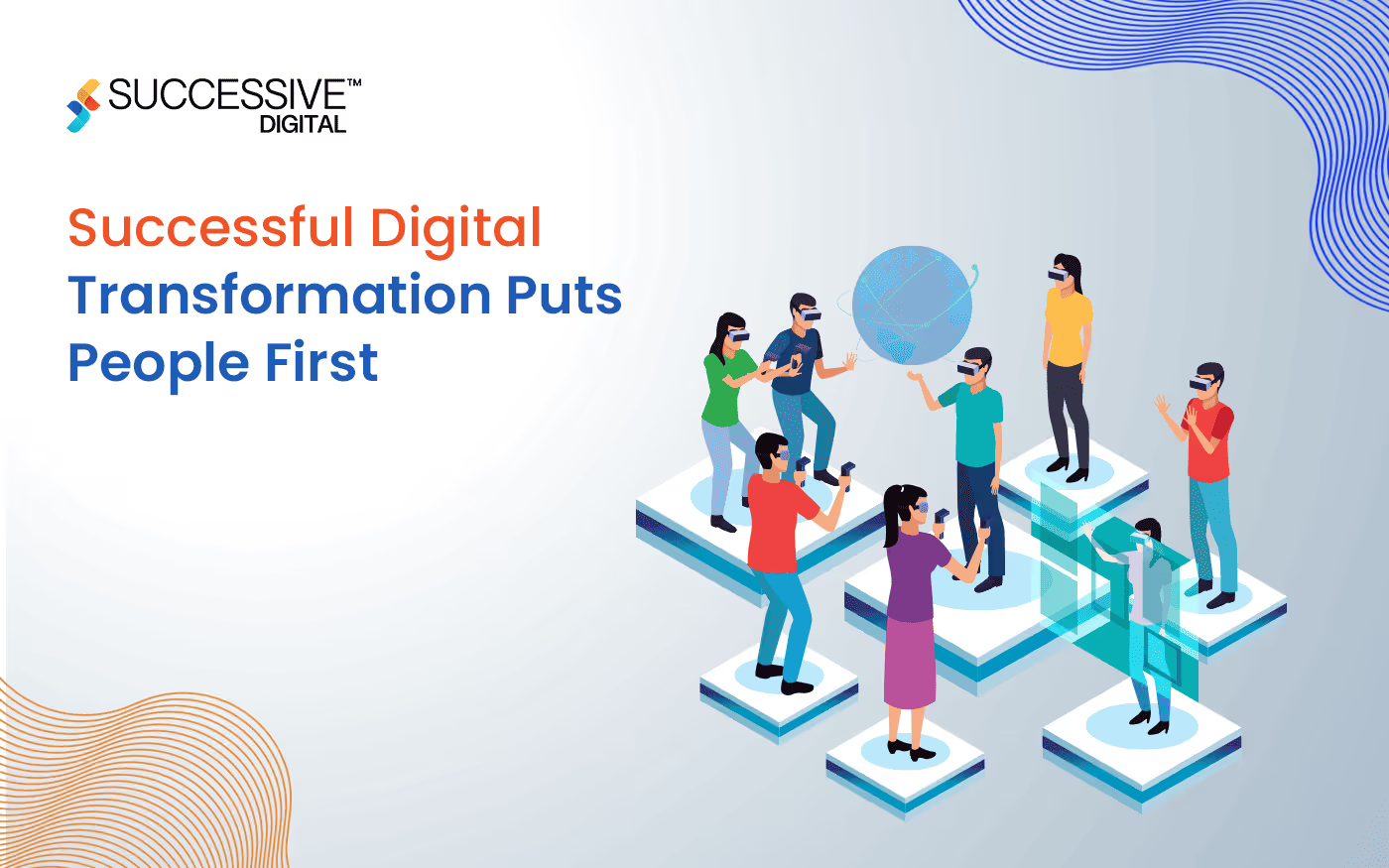- Frequent and effective communication among all stakeholders while designing and implementing any business strategy is essential to digital success.
- Flexibility and efficiency among business leaders and a clear transformative vision are vital components to making enterprise-wide technological and cultural shifts.
- A primary benefit of people-first digital transformation is improved customer experience, a higher increase in competitive advantage, and sustainable business growth.
- Digital adoption partners (DAP) are on the rise, revolutionizing how businesses approach their customers and enabling organizations to transition digitally as seamlessly as possible.
Defining corners close to transformation
It is no longer a secret that digital transformation plays a significant role in making business competitive. However, a successful digital change occurs when an organization's digital strategy focuses on a people-first approach. This includes prioritizing digital goals, anticipating market demand, understanding the customer's immediate requirements, and harnessing a digital culture to produce meaningful products and services.
First, digital transformation should be guided by a clear and defined purpose driven by everyone in the organization and stakeholders that can relate to it. Second, a people-first approach should be considered an innovative concept to drive the technological shift from the perspective of cultural change and inclusive business benefits.
Companies implementing people-first digital transformation maximize opportunities to expand their business reach, bring people closer to the brand, and create an environment where their offerings are making user's life simpler and more convenient.

The Cost of Digital Hesitancy
In a world where change is only constant, the importance of digital has become more prominent and is now an inevitable part of the post-pandemic market. Even skeptical organizations are embracing change, but as the rate of digital transformation grows, so do the consequences for some to fall behind. Many organizations have started modernizing their services. However, favouring digital transformation attracts some initial change management and cost.
Businesses with indecision to transform or implement resilient future-proof strategies to accelerate will miss out on the race and get disrupted easily. With human capital at the core, the people-first digital transformation is a multi-faced task, and resistance to shifting from usual business models can bring in more deep complexities toward business continuity in a more competitive global landscape.
Foster an Experimentation Culture
For any successful business strategy, experimenting and communicating among all stakeholders is an essential component of effective implementation. Encouraging open collaboration and a transparent platform to accelerate employee engagement goes a long way in ensuring right and collective business decisions.
Even with a compelling purpose and vision to transform, there is no way to predict outcomes. Digital demands continuous experimentation with a system to continuously innovate, test, and repeat for a higher probability of success. Rethinking and redesigning legacy business frameworks slow down business continuity for a short period. Still, for a large-scale multi-layer transformation, it is vital to keep experimenting with small digital solutions within and outside the company ecosystem in a safer and controlled manner until the desired results are achieved.
Technology Partnerships for People-First Strategy
Obtaining suitable personnel with the sought-after capabilities to catalyse transformation can be challenging and require an extended duration, in the current digital landscape. Digital adaptation is not about "what of progress" but "how". Leaders around the globe are presenting their connections with digital vendors and acceleration services afresh, to push on the speeds of alternation and reach common objectives.
Digital transformation service providers are becoming an optimal pick for companies to secure business continuity and augment the adoption rate of the comprehensive digital technologies blueprint into the internal business domains. Companies profiting from DAP are taking full advantage of subject matter expertise (SME), managing with unforeseen situations, and compete to participate in the digital future without interfering with the routine operations.
Successive Digital facilitates companies across various sectors and industries to design, develop and deploy a versatile digital blueprints that stay devoted to a customer-first perspective and scale to an ever-changing market.
Successive Digital – Your Gateway to Digital Transformation?
The rise of the digital will require organizations and the workforce to rethink their business models, as digital transformation is inevitable and a constant source of global innovation. Organizations must be adaptive enough to adopt a people-first approach to stay ahead of the competitive curve. One way to keep the potential growth high is by getting the right digital solutions provider on board and kick-starting the transformation journey.
.avif)









.jpg)









